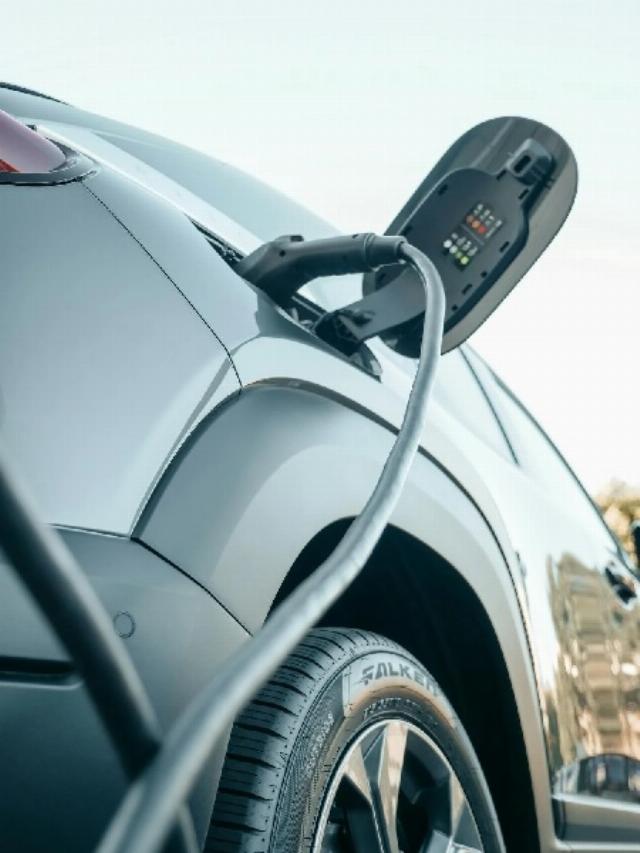

Pexels/Kindel Media
Despite what seems like widespread skepticism, there are some advantages to EVs.Well, one thing we’ve learned is that people are buying them. Americans bought 230k EVs in 2019, 245k in 2020, 462k in 2021, 760k in 2022 and 1.1 million in 2023. So far in 2024 they’ve purchased 346k so the trend appears to be slowing.
EVs have arrived and they’ve brought a whole new batch of acronyms along with them, although they’re all commonly called EVs. Hybrid electric vehicles run on gasoline and electricity and are sometimes referred to as HEVs. Then there are the plug-in hybrid electric vehicles (PHEVs) and all-electric vehicles or battery electric vehicles (BEVs). The electricity they use is produced from natural gas, coal, nuclear energy, wind energy, hydropower, and solar energy and stored in onboard battery packs. It’s worth mentioning that these same sources power the pumps in your neighborhood gas station. Although there is some overlap with HEVs and PHEVs the following comments address BEVs, hereafter referred to as EVs, as it’s more familiar to most readers,
Despite what seems like widespread skepticism, there are some advantages to EVs. It tends to cost less to recharge an EV than it does to purchase gasoline or diesel fuel for the same driving range, although costs to recharge do vary depending on location and power source. EVs accelerate more quickly than ICVs (internal combustion vehicles) which is exhilarating, and they are quiet. So quiet in fact that some manufacturers add an external sound system to their EVs to warn pedestrians of their approach. EVs have fewer moving parts than ICVs which means fewer components to wear out. Some EVs are capable of receiving updates over the internet which can reduce trips to the garage, and battery warranties of 8 years OR 100k miles (whichever comes first) are common. The U.S. Department of Energy tells us that an EV uses 87% to 91% of its energy to move the vehicle compared to ICVs which only use 16% to 25%. The majority of the energy an ICV engine produces is wasted as heat. When EVs go downhill, coast or brake they capture that kinetic energy, convert it to electricity and send it back into the batteries. There are obviously no tailpipe emissions from EVs.
While these features are compelling, buyers have some reservations. One is that the initial purchase price of an EV is higher than that of an ICV. The average retail price of a subcompact ICV is $22,627 while a similar EV will set you back $31,895. For an SUV the difference is higher. An average price for a fully-electric compact SUV is $53,048 compared to $35,722 for comparable ICV. Proponents of EVs claim the price differential is diminishing and that the savings will accrue the longer owners keep an EV. Furthermore, some EV purchasers may be eligible for a tax credit of up to $7,500.
<img alt captext="Pexels/Kindel Media” class=”post-image-right” src=”https://conservativenewsbriefing.com/wp-content/uploads/2024/10/are-evs-here-to-stay.jpg” width=”400″>Buyers are also wary of the driving ranges of EVs. For those who have short daily commutes or other local trips this shouldn’t be an issue as most Americans drive under 50 miles per day. While “range anxiety” is a very real thing, most EVs sold today are able to travel 200 miles or more on a single charge. Many EV owners are able to recharge their vehicle at home, but renters may have to make adjustments. The number and availability of public charging stations is also a concern as is the length of time it takes to recharge an EV.
Recharging times can vary from as little as 20 minutes to several hours if there’s a line at the charging station. A study by Edmunds found that the fastest charging EV was the 2024 Hyundai Ioniq 6 Limited RWD, recharging at 848 miles per hour of charging time. The slowest was the 2022 Chevrolet Bolt EUV Premier which was clocked at 172 miles per hour of charging time. Some EVs charge faster than others and the output of charging stations varies. Level 1 charging cables are supplied with many EVs and connect directly to a common 120-volt outlet. A Level 2, 240-volt home charging station will charge an EV much more quickly but that convenience is offset with a higher cost. This may range from $500 – $1,000 or more depending on the wiring conditions of the installation site and local labor charges. Sometimes there are government incentives available which may help offset some of the cost. Some commercial charging stations, called DC fast charging or Level 3 charging stations, are much faster. The Biden administration and Congress allocated $7.5 billion for EV charging stations in 2023 and so far states have built…. wait for it… seven stations.
The efficiency of EV batteries tends to diminish with the age of the battery as well as ambient temperature conditions. Extreme temperature ranges necessitate the use of the cabin heater or A/C which produce additional battery drain. With typical use the average driver can expect 8 – 12 years from an EV battery, which aligns nicely with the typical battery warranty. This begs the question, “And then what?” EV battery replacement costs have been coming down but users can expect to spend thousands, or even tens of thousands of dollars for replacement parts and labor. Potential buyers are well-advised to research this before investing in an EV.
Besides the concerns of the costs of the initial purchase and maintenance and the issue of range anxiety, we’ve seen stories of EVs spontaneously bursting into fierce, nearly-unquenchable flames. These fires can occur spontaneously due to overheating or if the vehicle is immersed in water, especially salt water. There have been cases where these fires continued to burn even when the vehicle was completely submerged! There are numerous reports indicating that the frequency of fires in EVs is lower than that of ICVs, and while that may be so, I see more stories of fires in EV vehicles than I do of ICV’s.
Sadly, the production of EV batteries is accompanied by rather significant human and environmental impacts. The term “artisanal mining” is bandied about which conjures up images of happy people living close to the Earth and singing folk songs while they work. The reality is that many of these people are adults and even children working in slave-labor conditions under corrupt governments. The negative implications of this technology occur at both ends of the production-use-disposal cycle.
While the technology exists to repurpose used EV batteries, the practice is not yet widespread. Theoretically the lithium and other essential elements in these batteries can be extracted, processed, and installed into new batteries. The batteries can also be used to store energy from solar cells in order to power homes and smaller devices, but this is still a developing industry. Our electrical grid is another weak point in the plan to implement widespread use of EVs. As the number of EVs sold continues to rise we can expect greater demands put upon our power grid which is already stressed.
I often wonder if there were similar discussions when America was transitioning away from horse-drawn wagons to “horseless carriages.”
One of America’s greatest treasures has provided us with a closing thought: “A solution is achieved when it is no longer necessary to make a trade-off, even if the development of that solution entailed costs now past. The goal of achieving a solution is in fact what justifies the initial sacrifices or transitional conditions which might otherwise be considered unacceptable.” — Thomas Sowell, A Conflict of Visions: Ideological Origins of Political Struggles
Image: Pexels/Kindel Media






